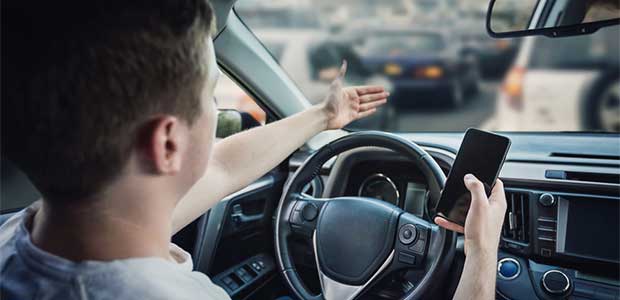
5 Steps to Help Reduce Distracted Driving Among Employees
In 2021, distracted driving led to the death of over 3,000 people.
- By Alex Saurman
- Apr 05, 2023
All it takes is a few seconds for a life to change when you’re behind the wheel of a vehicle. Reaching for an object on the passenger's side and taking your eyes off the road can have severe consequences for you and those around you.
In 2021, 3,522 people lost their lives to distracted driving, per the National Highway Traffic Safety Administration (NHTSA).
“Using a mobile device while driving is the ultimate form of distraction, but distraction comes in many forms,” said Mark Chung, executive vice president of roadway practice at the National Safety Council, in a news release. “You need to just drive when you’re behind the wheel; it doesn’t matter if you’re talking on speaker phone, mentally preoccupied, or eating breakfast on your way to work, it’s distracting and puts you and others in danger while you’re driving. It’s unnecessary and not worth the risk.”
People who drive as part of their job or oversee employees who drive for work need to be aware of the dangers distracted driving poses. For Distracted Driving Awareness Month, celebrated in April, let's look at five steps employers can take to ensure everyone gets home at the end of the day.
Educate employees. It’s essential for employees to understand what distracted driving is and why it’s dangerous. There are three main types of distracted driving, according to the National Institute for Occupational Safety and Health (NIOSH).
- Visual distractions include anything that takes your eyes off the road, such as checking your phone.
- Manual distractions are ones that take your hands off the steering wheel
- Cognitive distractions occur when a driver’s thoughts are focused on something other than driving.
Create a policy. If your workplace has drivers but no distracted-driving-related policy, it might be time to create one. NIOSH provides factors to consider when crafting the policy, such as
- Who and what vehicles and devices the policy will cover
- What will be required of employees and what happens if rules are broken
- If technology can play a role in the policy
Do not allow phone usage. Drivers should not be answering calls, responding to emails or checking text messages while behind the wheel of a vehicle. Many states have laws in place against texting while driving. If a driver does need to use their phone—whether it be to look up directions or call someone—they should pull off the road and into a safe area before doing so.
Ensure drivers know to make adjustments before they go. Any adjustments to mirrors, seats or other objects in the car should be made before the driver departs. If a GPS is needed, this, along with any music or podcasts, should also be set before starting the journey.
Discourage eating while driving. Eating can lead to drivers taking their hands off the wheel and directing their attention elsewhere. But if a driver does need to eat, they should pull off the road and find a safe place to stop and park. Employers can also support this step by ensuring employees get breaks.
As an employer, there are many actions you can take to make sure every one of your employees stays safe and unharmed. If you're looking for more resources on distracted driving, check out the following: